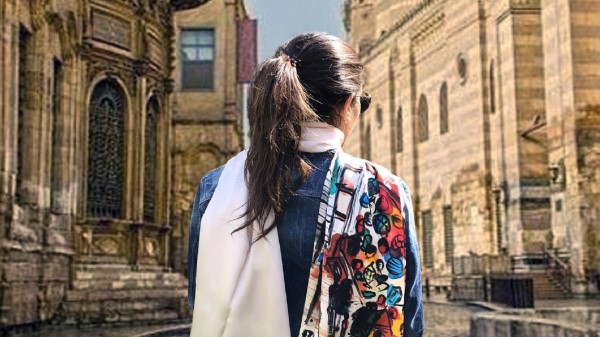Practitioners from the world of art and fashion have been exploring one another's territory for many years. Fashion is popularly understood as a commercial pursuit – transient and superficial – and more often than not, criticized for its perceived lack of content. While art is considered a highbrow – timeless and elitist. These broad generalizations fail to take into account creative crossings and significant partnerships between fashion designers and artists.
Harnessing two forms of art - fashion and painting, Canvas Label, a local brand, founded by Dania Ghonim spawned out of the nooks and crannies of Cairo’s fashion scene as a vehicle for social commentary. The brand grasps the significance of the hybridization of both disciplines, not only as a catalyst for visual experimentation – an “Art movement” in Ghonim’s own words, but also hopes to translate a socio-political message into material form.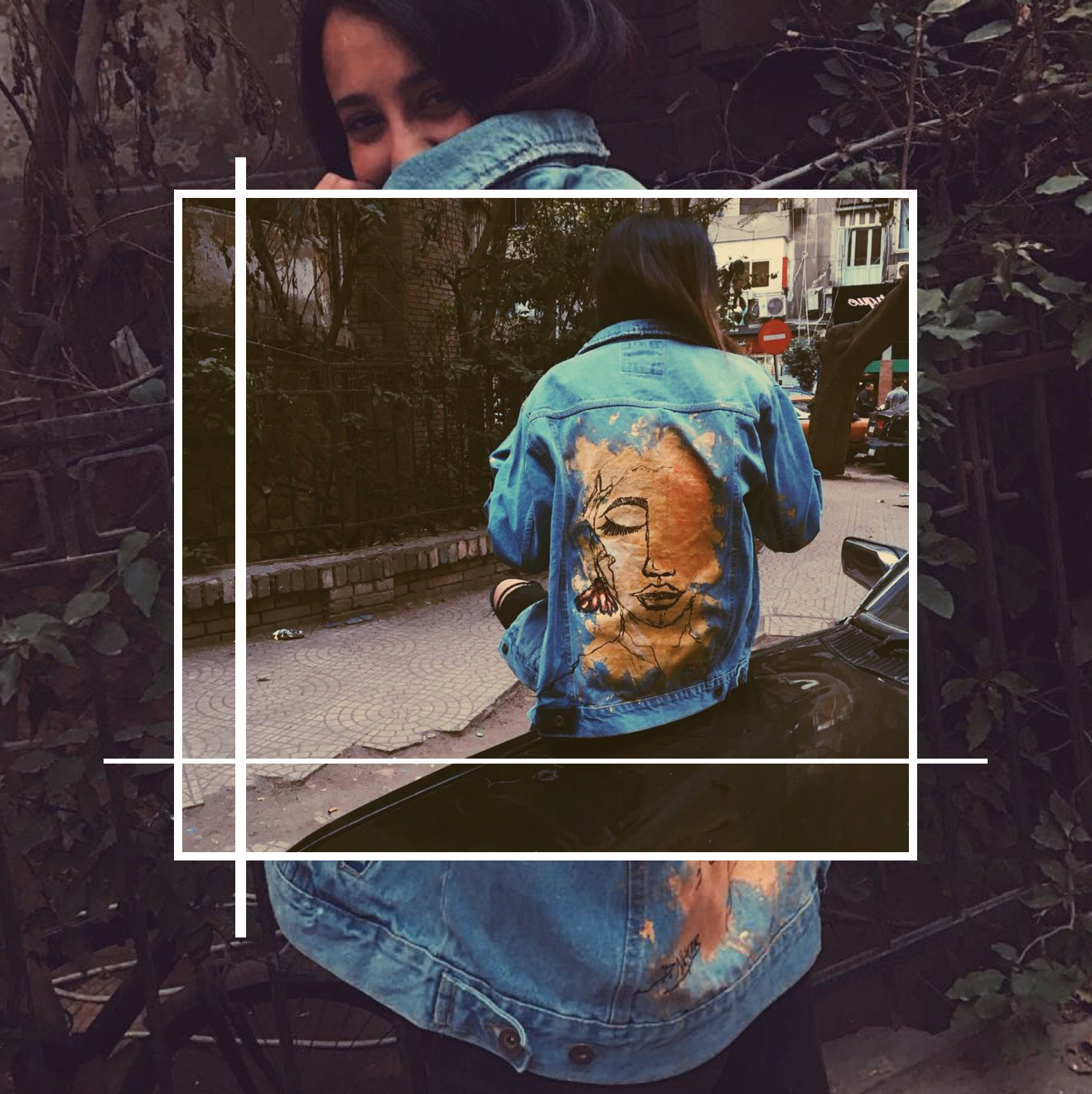 Ghonim was growing sick of Cairo’s soul-crushing repetitiveness, “I truly believe Cairo kills. We all went to the same schools – we go out in the same places, listen to the same music, wear the same clothes. People started looking the same to me. It was mind-numbing,” she explains.
Ghonim was growing sick of Cairo’s soul-crushing repetitiveness, “I truly believe Cairo kills. We all went to the same schools – we go out in the same places, listen to the same music, wear the same clothes. People started looking the same to me. It was mind-numbing,” she explains.
Reinventing the denim jacket by collaborating with Egyptian artists, to create one-of-a-kind, stand-out pieces, Canvas Label epitomizes individuality - urging customers to create their own identity and unique style.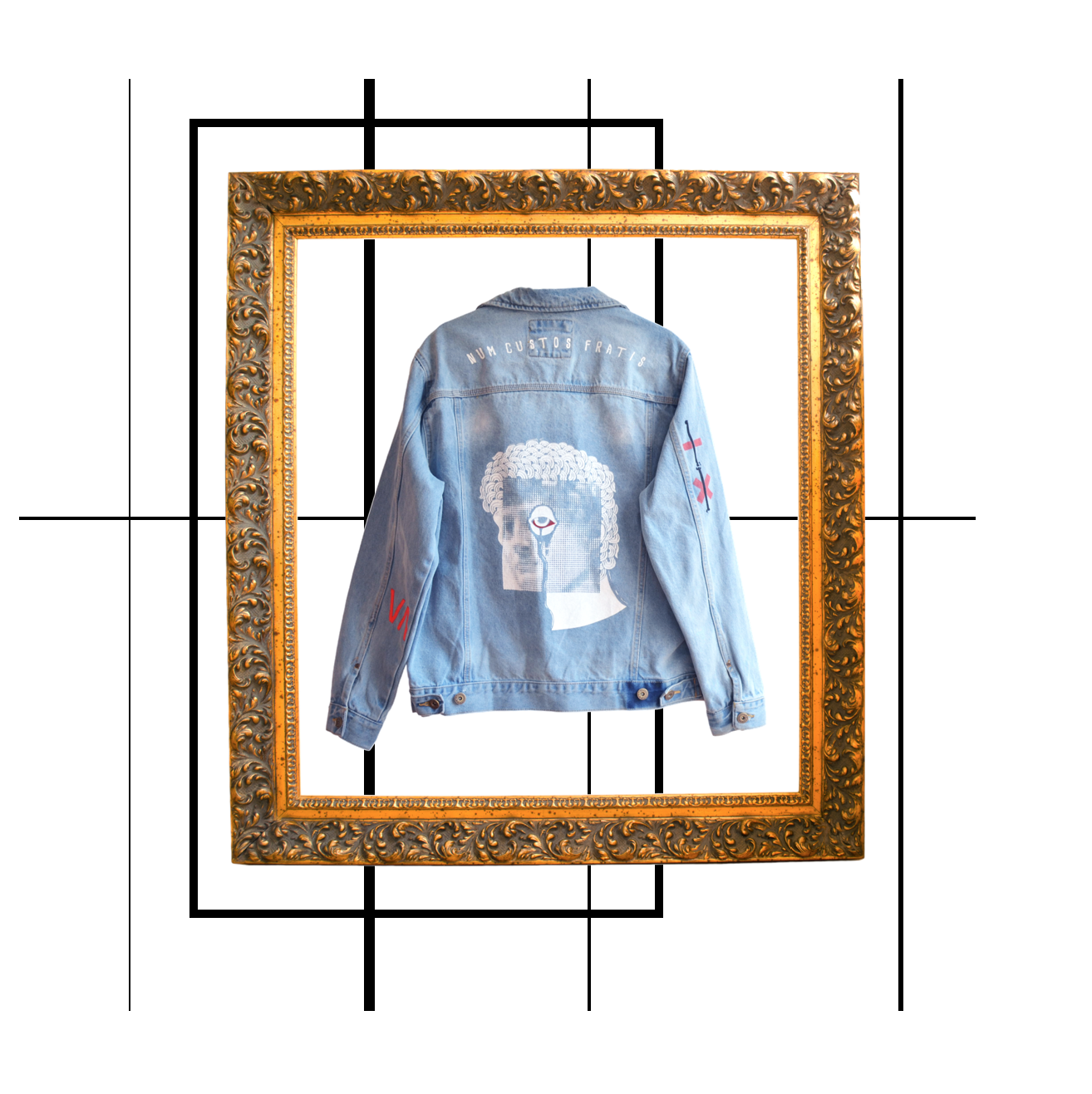 However, the embodiment of art in fashion as a means to make social and political comments is not new or unusual. If anyone managed to eclipse Chanel as the leader of Paris fashion scene at any point in history it’s Elsa Schiaparelli who hired SalvadorDalí, famed surrealistto design fabric for her fashion house. In 1937, they worked on a silk evening dress which featured Dali’s painting of a lobster wriggling up the wall. The dress was worn by American socialite Wallis Simpson for a photoshoot in Vogue magazine while preparing for a divorce from Edward VIII- who to abdicate the British throne to marry her.
However, the embodiment of art in fashion as a means to make social and political comments is not new or unusual. If anyone managed to eclipse Chanel as the leader of Paris fashion scene at any point in history it’s Elsa Schiaparelli who hired SalvadorDalí, famed surrealistto design fabric for her fashion house. In 1937, they worked on a silk evening dress which featured Dali’s painting of a lobster wriggling up the wall. The dress was worn by American socialite Wallis Simpson for a photoshoot in Vogue magazine while preparing for a divorce from Edward VIII- who to abdicate the British throne to marry her.
Dalí’s later work implied the symbolic use of the invertebrate came with daring sexual innuendo, arguably rather explicitly suggesting emasculation and fear of castration – the most outrageous message to send to Edward at the time. This case in point goes to show that the collision of art and fashion clearlyreaches beyond the creation of pretty clothes for pretty clothes' sake. However, it seems as though in the past, this interplay was more powerful in making socio-political statements to make the world take notice.
Canavas Label teamed up with exceptional creatives, namely sandbox founder Suhayla Al Sheikh, Streetwear brand Unty, illustrator Shanwar Badr and other emerging artists including Diala Naguib, Beya Khalifa, Chanel Arif – Canavas Label, seeks to create museum quality art – to wear and to look at, while shining a spotlight on Egypt’s young talents. Most of the Artists actually met the people who bought the jackets they designed and spoke about why they painted what they painted. 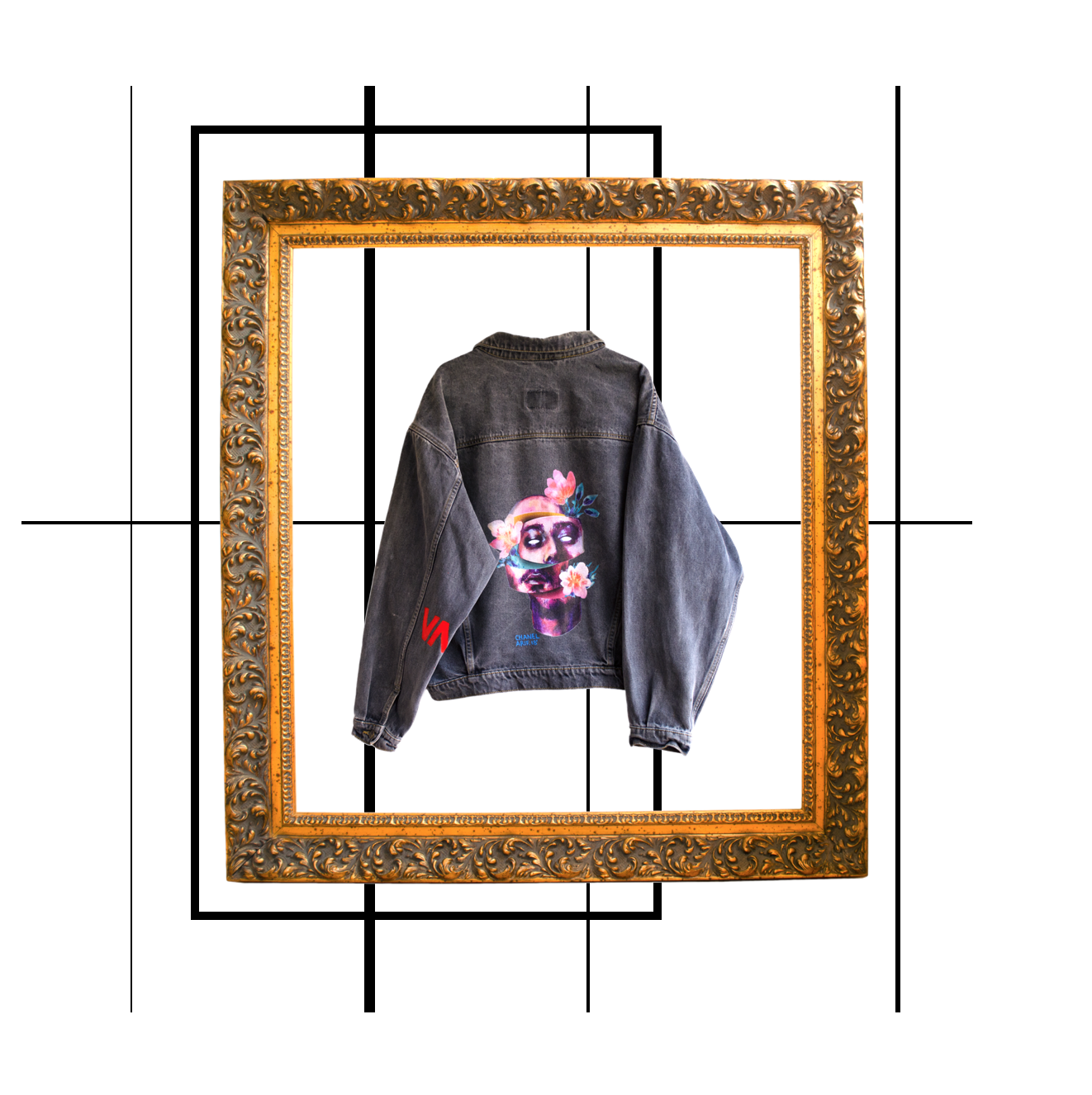 “People weren’t just buying a jacket, they were buying a story. When you buy a piece from Zara – you know nothing about it – you don’t even know who made it. I tried creating a relation between the artist and customer,” adds Ghonim.
“People weren’t just buying a jacket, they were buying a story. When you buy a piece from Zara – you know nothing about it – you don’t even know who made it. I tried creating a relation between the artist and customer,” adds Ghonim.
The key theme for the first five-piece capsule collection being drama, artists were asked to come up with the bold and daring artwork. “I’ve been wearing all black since I was a child – my boss thinks too depressing,” laughs Ghonim, “so I’m always trying to balance the all black, everyday black with statement pieces. I’m always looking for jackets to add life to my outfits. If anything, this collection really mirrored my personal fashion taste,” she continues. The second collection, Fete - was exceptionally festive oriented, featuring themes of dance and music – and had practical meaning as it was launched right before Sandbox and summer season.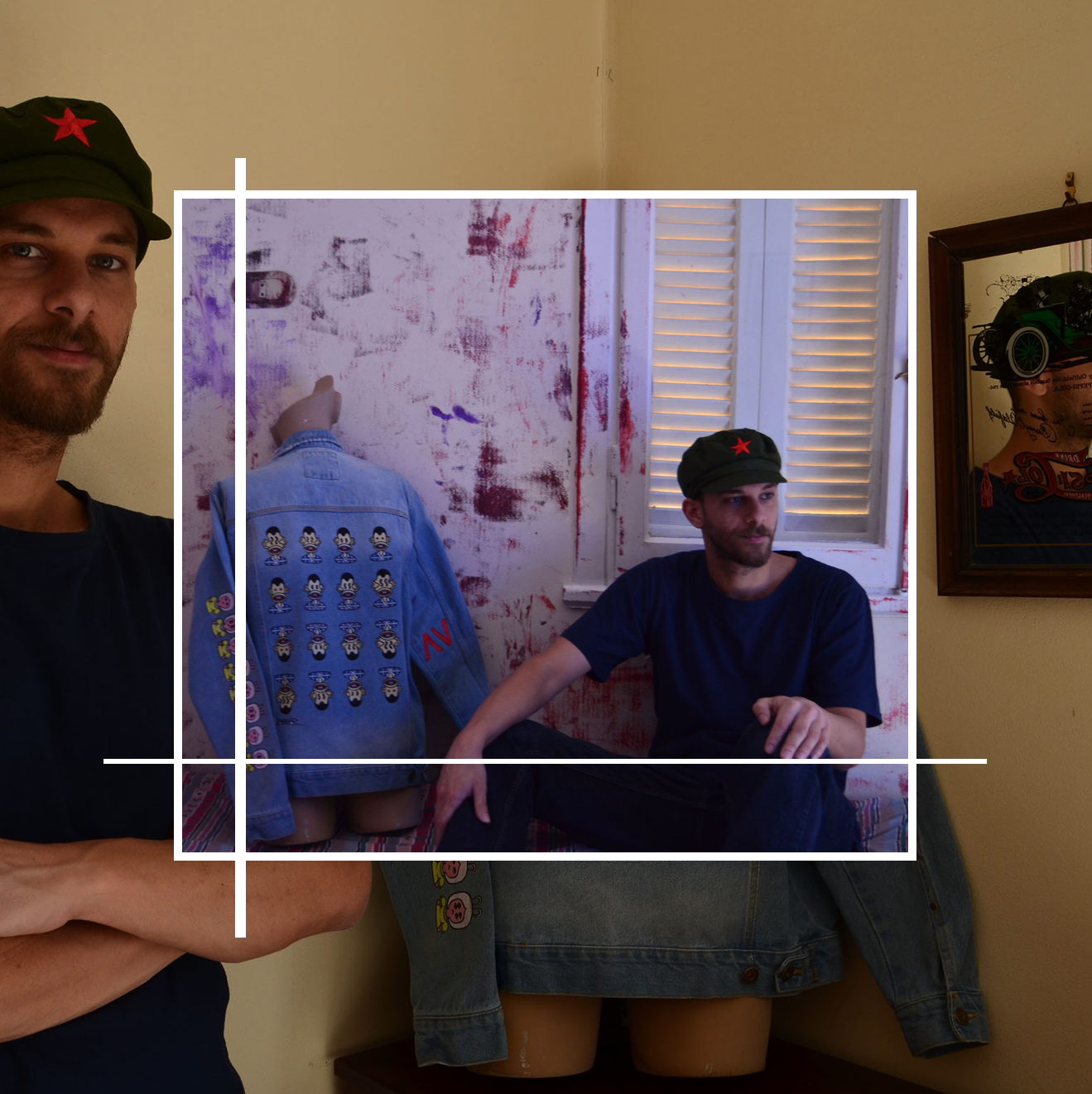 Although Canvas Label is introducing a waft of newness into Egypt’s creative scene – it seems as though globally we have become desensitized to appreciating the interplay between fashion and art – at least relative to past times. We’re being bombarded through the virtual world by people desperately trying to make fashion statements hoping to stir controversy – be it Lady Gaga in a meat dress or showing up in an egg to the Grammies.
Although Canvas Label is introducing a waft of newness into Egypt’s creative scene – it seems as though globally we have become desensitized to appreciating the interplay between fashion and art – at least relative to past times. We’re being bombarded through the virtual world by people desperately trying to make fashion statements hoping to stir controversy – be it Lady Gaga in a meat dress or showing up in an egg to the Grammies.
Many high-end designers are also merging art with fashion. Sixth century mosaics of Monreale Cathedral exploded onto the runway with Dolce and Gabana’s Winter collection back in 2014. Louis Vuitton collaborated with Jeff Koons to bring high art to the high street - recreating the famous artworks of Da Vinci, Titian, Rubens, Fragonard, Van Gogh which were transported onto a range of the fashion house's most popular products with names of the artists emblazoned across the handbags.
Alexander McQueen consistently referenced fine art in his collections, taking some of the grandest works of Old Masters including Jean Fouquet, Sandro Botticelli and Stephan Lochner - digitally captured and transferred onto red, gold and silver dresses embellished with ornate embroideries.There are so many modern examples of international fashion designers taking inspiration directly from visual artists – but we ought to appreciate that the process is taking physical presence in Egypt by a local brand.
Also, rather paradoxically,denim, being one of the most dominant elements of mainstream urban lifestyle - is being used by Canvas Label as a medium for painting. Not only does this create a more meaningful consumption experience for the shopper – or in this case the collector – but it also insinuates that the boundaries between visual art and commercial commodities have become increasingly blurred.
Canvas Label also upholds principles of inclusivity by sticking to the oversized, masculine silhouette. “I don’t want to make clothes that fit a certain body type,” explains Ghonim. Not thatfitted is passé, but the anti-fit style makes the jacket look even cooler. We’re not surprised that the jacketsare neither overtly feminine or masculine and Ghonim has promised to keep her collections as gender free as possible.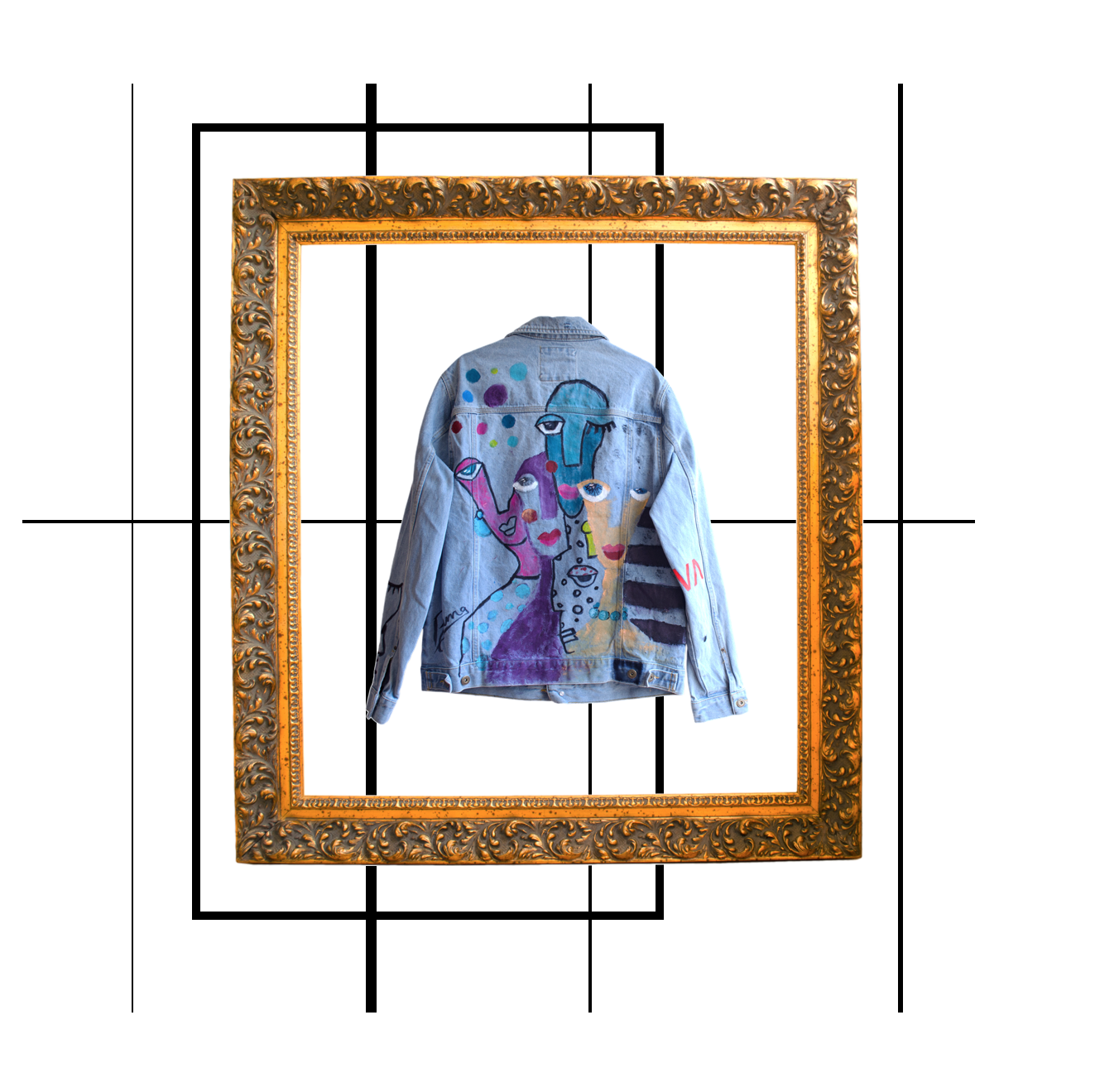 With Canvas Label evolving ever so organically from the beginning, Ghonim told us she does not have a written plan for the future. “All I know is, I want to work with musicians, film makers and photographers – I’m trying to find out how we can translate their art onto a jean jacket” she says.
With Canvas Label evolving ever so organically from the beginning, Ghonim told us she does not have a written plan for the future. “All I know is, I want to work with musicians, film makers and photographers – I’m trying to find out how we can translate their art onto a jean jacket” she says.
Check out Canvas Label's Instagram page here.

